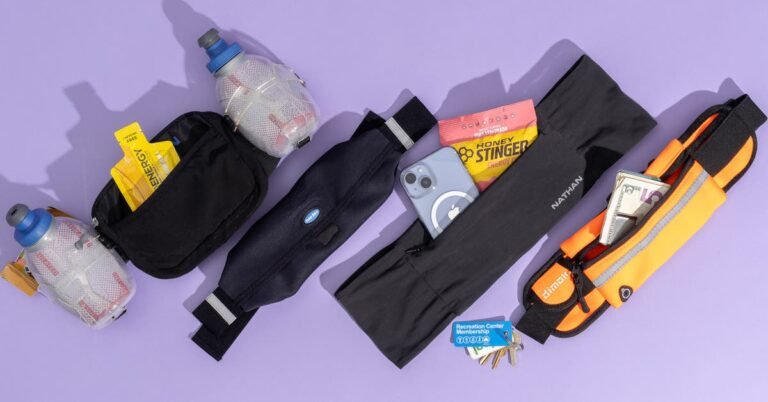No dog ever begs to be put on a leash. But to stay safe during walks, your dog does need to wear one.
And though it may be tempting to choose a leash that gives your dog more freedom, retractable leashes can pose a threat to your pet’s safety as well as your own.
For our guide to retractable leashes (which is now archived), we spoke with multiple dog trainers who all said the same thing: Leashes that extend and have a snap-back recoil can be dangerous.
Dr. Michael Gonzalez, the interim medical director at Veterinary Emergency Group in Clifton, New Jersey, said he’s seen dogs come in with various injuries that were sustained during walks using retractable leashes, especially when a dog wasn’t wearing a harness.
“They can pose a big [neck] injury to themselves,” Gonzalez said. These leashes are typically thin and string-like, so he also listed potential hazards such as entanglement, cord burns, cuts, and—worst-case scenario—strangulation of the neck or limbs. Sometimes there are smaller muscle injuries, but there’s also the risk a dog can suffer more-serious spinal injuries, such as a herniated disc, Gonzalez explained. Even if a retractable leash is used with a harness, the risk remains.
Plus, a dog can lengthen the leash by simply running ahead, and that can also be harmful to the person holding the leash.
Our previous reporting documented one person having a finger amputated due to the cable leash wrapping around their finger. Another person suffered critical eye damage caused by the metal attachment on a retractable leash snapping back. Gonzalez said he’s heard of instances where someone has tried to stop a dog by grabbing the cord, which has led to their hands being burned. He also mentioned injuries to humans’ arms or shoulders.
Also, these leashes are not the strongest, so their locking mechanism could end up failing. Nicole Kohanski is the Training and Counseling–certified founder of Wiggle Butt Academy, a behavioral and training facility for dogs. She’s had clients who’ve said the locking mechanism ended up breaking. This has resulted in the hard plastic piece hitting dogs, scaring them, and making them run away. If this happens, you could lose a dog, or they could run into traffic.
Unfortunately, non-retractable leashes can also result in injury. For example, senior pets writer Mel Plaut shared a story about their dog, Dave, chasing a squirrel. Mel was unable to pull Dave back and sustained a nylon burn that left a hole in their finger. The pain lingered for about 10 months.
But there’s a very simple way to mitigate the risk of injury from a retractable leash while still giving your dog a bit more room to run. “I love, depending on the size of the dog, to give them a little wiggle room. So I like to have enough room that your dog has some room to sniff, and then has a gentle bend in that leash when they’re fairly close to you,” Kohanski said.
For this, you need a standard 4- to 8-foot leash with a traffic handle (6-foot leashes are more likely to include a traffic handle). These leashes come in a number of materials, including flat nylon, rope, and poly-coated nylon.
If you’re keeping your pet close, use both handles, and keep the leash gently bent so your dog has some flexibility. If you’d like to give your dog more room to sniff, you can rely on the first handle.
During training, Kohanski also uses a 15- to 20-foot leash for “sniffaris,” to give the dog even more room to roam in safe areas. These longer leashes will provide the same freedom as retractable ones, but they have to be manually wound. Since there’s no apparatus that will hold the unused leash, it can be bulky, but the safety benefits make it worthwhile.
Our top pick, the nylon Max and Neo Double Handle Heavy Duty Reflective Leash, is 6 feet long and typically costs $17 (about the same price as many retractable leashes).
Mel, who is currently conducting testing for an update to our guide to regular leashes, has been using our best-performing leash for nearly two years. They said they find its two padded handles comfortable to hold, and it conveniently has a D-ring that can be used for a clip-on poop bag dispenser. The leash is showing slight signs of wear, which is to be expected since it’s used multiple times a day, every day. And the wear is largely cosmetic, so quality and efficiency are not impacted.
It can be tempting to use a retractable leash, but for most pets and their caretakers, these leashes aren’t the best option. So do yourself and your best friend a solid by sticking to an old-faithful leash.
This article was edited by Hannah Rimm and Maxine Builder.
Source link
[og_img
No dog ever begs to be put on a leash. But to stay safe during walks, your dog does need to wear one.
And though it may be tempting to choose a leash that gives your dog more freedom, retractable leashes can pose a threat to your pet’s safety as well as your own.
For our guide to retractable leashes (which is now archived), we spoke with multiple dog trainers who all said the same thing: Leashes that extend and have a snap-back recoil can be dangerous.
Dr. Michael Gonzalez, the interim medical director at Veterinary Emergency Group in Clifton, New Jersey, said he’s seen dogs come in with various injuries that were sustained during walks using retractable leashes, especially when a dog wasn’t wearing a harness.
“They can pose a big [neck] injury to themselves,” Gonzalez said. These leashes are typically thin and string-like, so he also listed potential hazards such as entanglement, cord burns, cuts, and—worst-case scenario—strangulation of the neck or limbs. Sometimes there are smaller muscle injuries, but there’s also the risk a dog can suffer more-serious spinal injuries, such as a herniated disc, Gonzalez explained. Even if a retractable leash is used with a harness, the risk remains.
Plus, a dog can lengthen the leash by simply running ahead, and that can also be harmful to the person holding the leash.
Our previous reporting documented one person having a finger amputated due to the cable leash wrapping around their finger. Another person suffered critical eye damage caused by the metal attachment on a retractable leash snapping back. Gonzalez said he’s heard of instances where someone has tried to stop a dog by grabbing the cord, which has led to their hands being burned. He also mentioned injuries to humans’ arms or shoulders.
Also, these leashes are not the strongest, so their locking mechanism could end up failing. Nicole Kohanski is the Training and Counseling–certified founder of Wiggle Butt Academy, a behavioral and training facility for dogs. She’s had clients who’ve said the locking mechanism ended up breaking. This has resulted in the hard plastic piece hitting dogs, scaring them, and making them run away. If this happens, you could lose a dog, or they could run into traffic.
Unfortunately, non-retractable leashes can also result in injury. For example, senior pets writer Mel Plaut shared a story about their dog, Dave, chasing a squirrel. Mel was unable to pull Dave back and sustained a nylon burn that left a hole in their finger. The pain lingered for about 10 months.
But there’s a very simple way to mitigate the risk of injury from a retractable leash while still giving your dog a bit more room to run. “I love, depending on the size of the dog, to give them a little wiggle room. So I like to have enough room that your dog has some room to sniff, and then has a gentle bend in that leash when they’re fairly close to you,” Kohanski said.
For this, you need a standard 4- to 8-foot leash with a traffic handle (6-foot leashes are more likely to include a traffic handle). These leashes come in a number of materials, including flat nylon, rope, and poly-coated nylon.
If you’re keeping your pet close, use both handles, and keep the leash gently bent so your dog has some flexibility. If you’d like to give your dog more room to sniff, you can rely on the first handle.
During training, Kohanski also uses a 15- to 20-foot leash for “sniffaris,” to give the dog even more room to roam in safe areas. These longer leashes will provide the same freedom as retractable ones, but they have to be manually wound. Since there’s no apparatus that will hold the unused leash, it can be bulky, but the safety benefits make it worthwhile.
Our top pick, the nylon Max and Neo Double Handle Heavy Duty Reflective Leash, is 6 feet long and typically costs $17 (about the same price as many retractable leashes).
Mel, who is currently conducting testing for an update to our guide to regular leashes, has been using our best-performing leash for nearly two years. They said they find its two padded handles comfortable to hold, and it conveniently has a D-ring that can be used for a clip-on poop bag dispenser. The leash is showing slight signs of wear, which is to be expected since it’s used multiple times a day, every day. And the wear is largely cosmetic, so quality and efficiency are not impacted.
It can be tempting to use a retractable leash, but for most pets and their caretakers, these leashes aren’t the best option. So do yourself and your best friend a solid by sticking to an old-faithful leash.
This article was edited by Hannah Rimm and Maxine Builder.
Why We Don’t Recommend Retractable Dog Leashes
[title_words_as_hashtags




